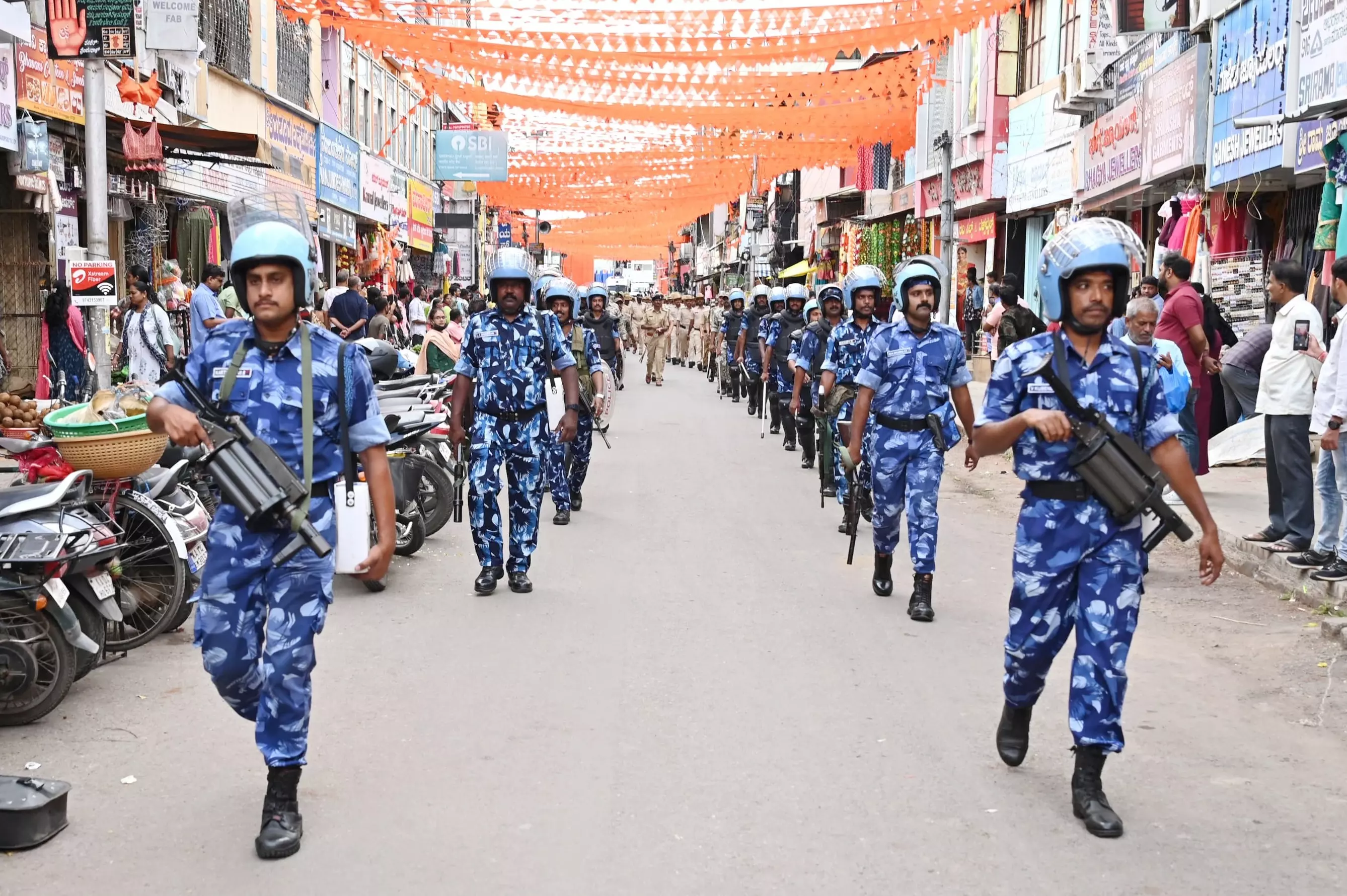
How Shivamogga went from being a socialist bastion to a communal cauldron
Communal polarization in the city dates back to the pre-Independence era when clashes took place during Lord Ganapathi’s immersion by the Hindu Mahasabha

It was once a cradle of socialist movement and farmers’ struggle. Today, Shivamogga, a prominent city in Karnataka, has become a hotbed of communal politics.
Recent communal clashes have further sharpened the Hindu-Muslim divide. The violence of October 1 is a testimony to the steadily rising communal tensions in Shivamogga.
A row over a Tipu Sultan cut-out between sections of Hindus and Muslims escalated into a violent clash during the Eid Milad procession in Shivamogga, leaving six people injured.
The police imposed prohibitory orders in the Shanthi Nagar area. Chief Minister Siddaramaiah visited Shivamogga and blamed miscreants for stoning an Eid procession. Sixty people from both communities were arrested. Congress leaders accused the BJP of politicizing the issue.
A ‘fact-finding committee’ accused Muslim groups of igniting the showdown and causing vandalism. But police sources in Shivamogga told The Federal that it was stone-pelting by the Bajarang Dal which triggered the clash.
A row over a Tipu Sultan cut-out between sections of Hindus and Muslims escalated into a violent clash during the Eid Milad procession in Shivamogga, leaving six people injured
Religious divide
Since 2019, as many as 163 communal incidents have been reported in Karnataka, with almost three-fifths of them in Shivamogga in Malnad district, represented by Home Minister Araga Jnanendra.
In February 2015, one person was killed and many others were injured during a rally organised by the Popular Front of India (PFI) to mark the birthday of its founder. It came close on the heels of a major rally held by groups led by the Vishwa Hindu Parishad.
Shivamogga witnessed terrible communal riots in 2022. The alleged murder of Bajarang Dal activist Harsha, who was in the forefront of the Hijab protest, was the trigger. The clash happened during the funeral procession of Harsha, attended by senior BJP leaders.
It is widely believed that Shivamogga has turned into a hotbed of communalism in recent years following the growth of the BJP in Karnataka. But communal polarization in the city dates back to the pre-Independence era. Communal clashes took place during Lord Ganapathi’s immersion by the Hindu Mahasabha.
Veer Savarkar
All this gave the Rashtriya Swayamsevak Sangh (RSS) a firm footing in Shivamogga even during British rule. Hindutva icon Vinayak Damodar Savarkar, accompanied by Nathuram Godse, who later assassinated Mahatma Gandhi, visited Shivamogga to participate in a Hindu Mahasabha conference.
Shivamurthy Circle, a landmark in Shivamogga, has a board that says ‘Hutatma Shivamurthy Circle’. Shivamurthy was the first victim of communal violence in post-Independence Karnataka.
In 1948, Shivamurthy was knifed to death by a bigoted mob during the immersion of a Lord Ganesha idol. Since then, Shivamogga has witnessed many communal clashes and claimed a few dozen lives.
People of Shivamogga point out the city’s links with socialist leaders Shantaveri Gopala Gowda, JH Patel, Kadidal Manjappa, Sarekoppa Bangarappa, Ram Manohar Lohia, UR Ananthamurthy, Kuvempu, and Lankesh, as well as early social reformers.
In 1951, Koagodu, a sleepy hamlet, saw an uprising by landless agricultural labourers of backward-class communities led by freedom fighter Ganapathiyappa. The movement became known as Kagodu Satyagraha.
Shivamurthy Circle has a board saying ‘Hutatma Shivamurthy Circle’. Shivamurthy was the first victim of communal violence in post-Independence Karnataka
Farmers’ movement
It led to land reforms in the state two decades later. The Karnataka Rajya Raitha Sangha (KRRS), was born in Shivamogga under the leadership of Prof. MD Nanjundaswamy and attracted nationwide attention. But the situation in Shivamogga has changed in the past two decades, with the BJP tasting political power in Karnataka. Breaking the electoral dominance of the Congress, M Ananda Rao of the BJP entered the Karnataka Assembly in 1983.
Even though the BJP started making steady progress in the early 1980s, the Hindutva ideology planted itself in the district in early 1935, with RSS entering the social space.
With the Sangh Parivar's support, the BJP started peddling its communal agenda and turned Shivamogga into a strong base. The men who contributed to this include BS Yediyurappa, DH Shankaramurthy, and KS Eshwarappa.
Speaking to The Federal, former English professor at the Kuvempu University, Rajendra Chenni, said: “Clashes break out over trivial issues. Communal organizations from both sides glorify such incidents. People seem to be more polarized now than ever before.”
Asked about the role of the BJP in making Shivamogga a hub of communal divide, DH Shankaramurthy, a former chairman of the Karnataka Legislative Council, says: “There is a lot of difference between BJP of the 1980s and the BJP now. When the BJP is in power, PFI and other organizations lie low. They become active whenever the Congress assumes power in the state.”
Congress spokesperson Ayanur Manjunath says; “The BJP doesn’t want tempers on both sides to die down. Earlier, both the communities lived together. The inter-dependency has eroded in recent years. It is now difficult to have a cup of tea with a person who belongs to another community. It is time to move beyond the ‘us and them’ narrative in Shivamogga.”

